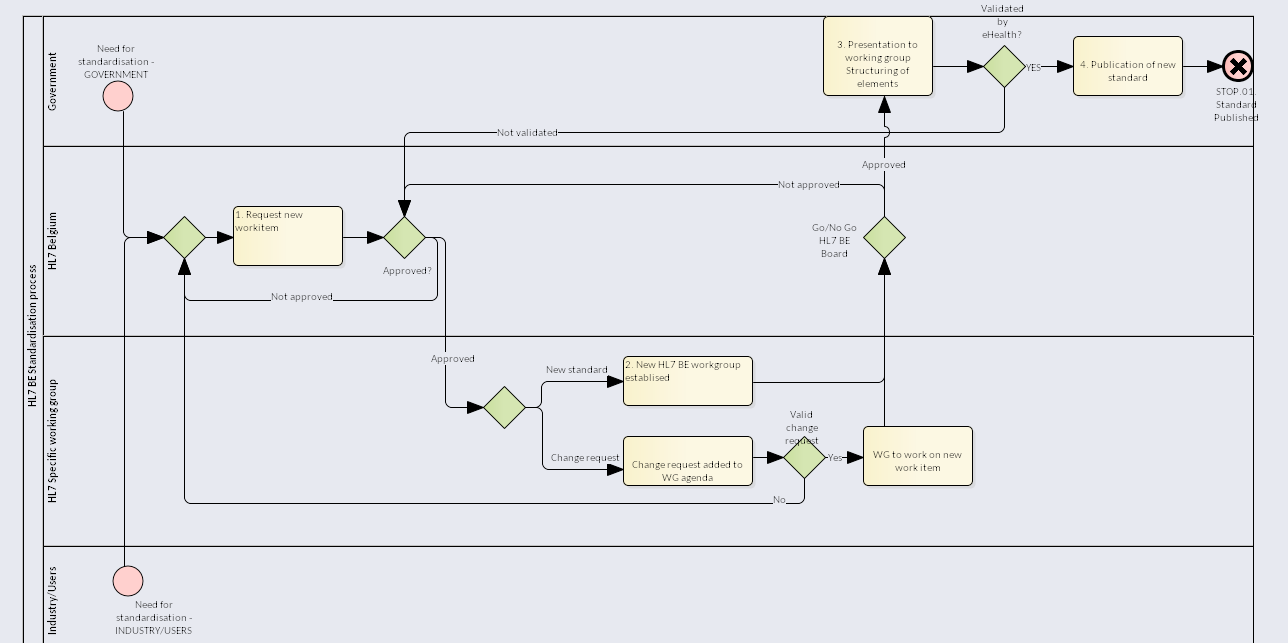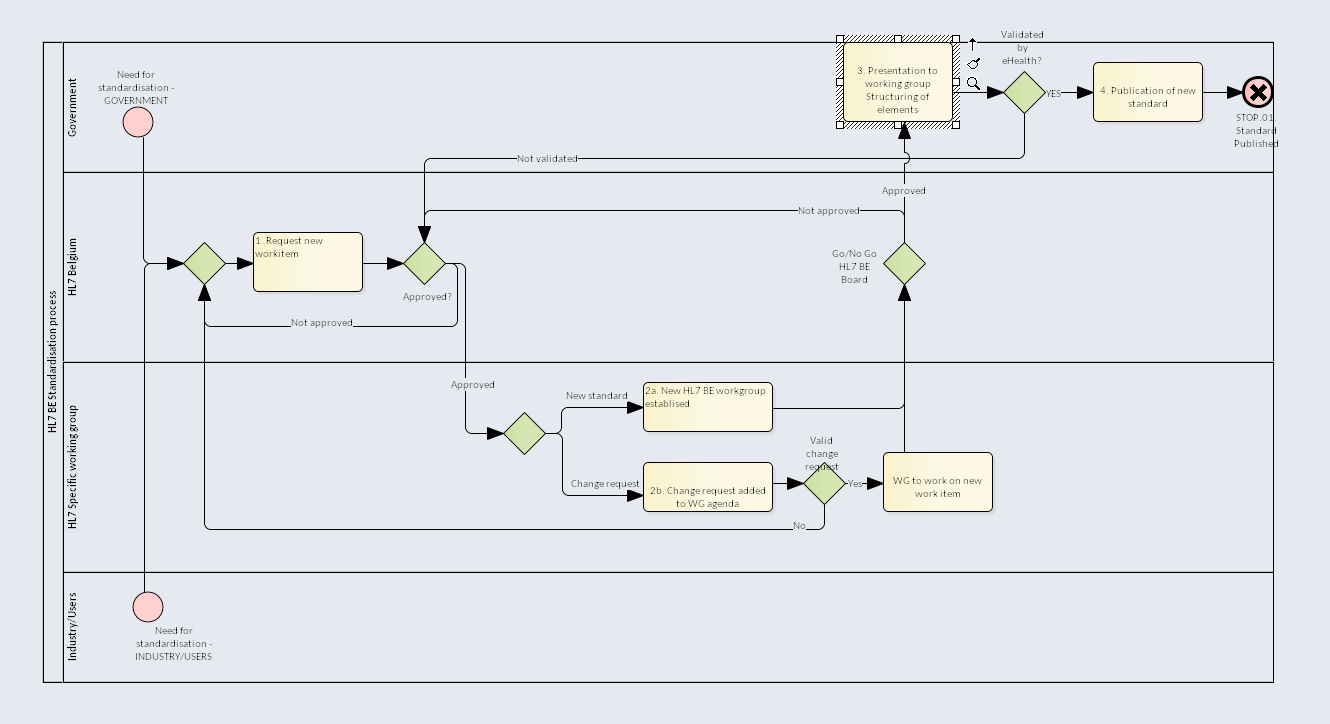Process towards standardisation in HL7 Belgium |
|---|
Goal: The requester(s) of a new standardisation or a change request need to pitch their idea to the HL7 Board in order to obtain clearance for the development of a new standard or a change request. Actors:
Preconditions: There needs to be clear use cases for a new standardisation request or a change request Post conditions:
|
22a. New HL7 Belgium workgroup has been established Goal: Inside HL7 Belgium a new working group is established with some clear use cases and needs for standardisation. The goal of this working group is to:
Participants:
Preconditions: There is need for new standardisation that has been accepted by the HL7 Belgium board Post conditions:
|
32b. A change request has been added to an existing working group Goal: A request for change of a standardisation topic for which already a working group exists will be transmitted, if in the correct request format, to the existing working group. It will be up to the working group to lead an ample discussion about the request for change and to adopt or not adopt the proposed change. Participants:
PreConditions: A working group on the topic already exists. The change request has enough quality to be passed onto the WG. PostConditions: The change request has been adopted The change request has not been adopted. |
43. Presentation to working group 'structuring of elements Goal: Only when the HL7 Belgium board did a quality check and voted on the proposal of a new request for standardisation or request for change, this request will be proposed to the working group structuring of elements at the eHealth Platform. They will then have the only authority to validate a new standard as a national implementation for Belgium. Participants:
Preconditions: HL7 Belgium Board accepted the result of the working group upon a new request for standardisation. Post Conditions:
|
4. Publication of new standard Goal: Once a request for new standard has been validated by the eHealth Platform this new standard can be published on the eHealth Website or others. Participants:
Preconditions: A request for new standard has been validated Postconditions: A new standard has been published on the eHealth Platform website or others. |
...

